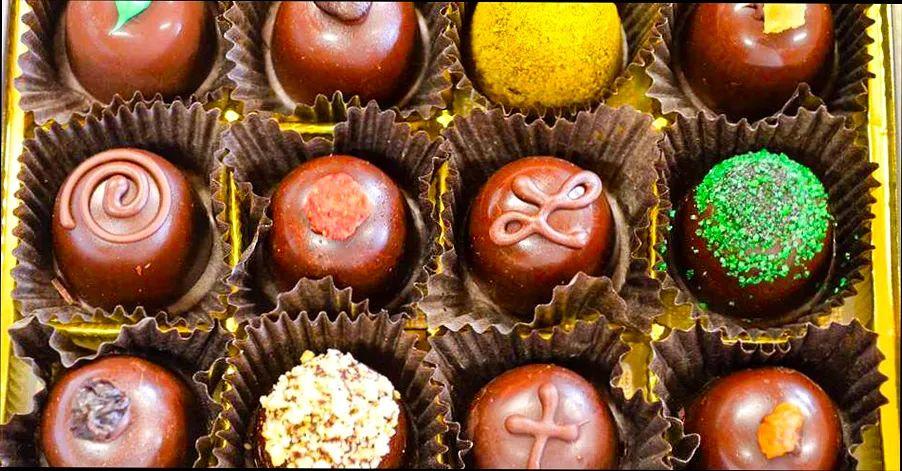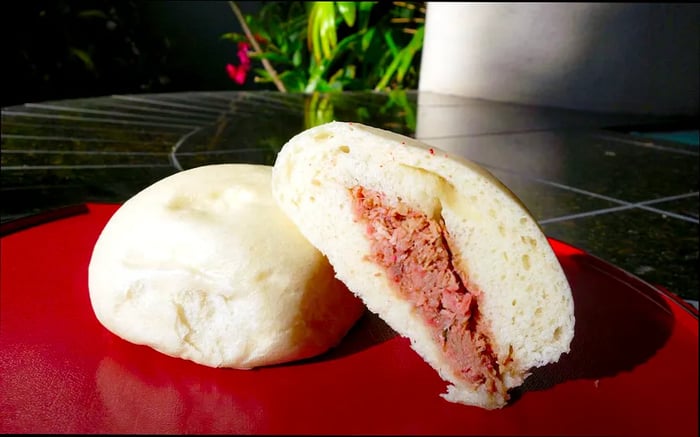Hawai‘i's Most Tempting Edible Souvenirs

IfIf you don’t leave Hawai‘i with a suitcase packed full of macadamia nuts, pineapples, and a few plastic leis, did you even visit? After all, Instagram stories from the beach disappear after 24 hours.
It's almost unthinkable to head home without a few keepsakes, and indeed, local culture insists on it. The Japanese practice of omiyage—gifts brought back from trips for friends, family, or co-workers—is deeply rooted here. Locals frequently bring back local foods or produce when traveling to other islands: from pork laulau smoked at a Big Island roadside stand, to exquisitely seasoned tako (octopus) poke from a Honolulu fish market, or a dozen original glazed doughnuts from the Krispy Kreme in Maui, the only one in Hawai‘i making its doughnuts highly sought after.
Given how prevalent this custom is, visitors often get swept up in it as well. Fortunately, each island offers a variety of local specialties that capture its essence, from Maui’s farm-to-table flair to O‘ahu’s vibrant and dynamic atmosphere.
However, while you might be tempted to stock up on avocados from Kona (so affordable!) or liliko‘i (passionfruit) from Maui (so plentiful and tangy!), the U.S. Department of Agriculture has its own guidelines for what souvenirs are appropriate. Due to Hawai‘i’s isolated location and tropical climate, only certain agricultural products can be transported to the mainland to prevent the spread of invasive species. Pineapples and coconuts are fine, but sugarcane and sweet potatoes are not. Generally, unless a fruit or vegetable is in USDA-approved packaging, it’s considered forbidden fruit.
O‘ahu
Modern Hawai‘i is defined by its rich fusion of traditions and cuisines from immigrants hailing from Japan, China, Portugal, the Philippines, and beyond, who came to work on the plantations in centuries past, blending with the native culture. The best omiyage from O‘ahu—found in bakeries nestled among high-rises and shopping centers—celebrates these beloved local specialties.
For example, when Leonard’s Bakery (933 Kapahulu Avenue) opened a few blocks off the Waikīkī strip in 1952, it popularized malassadas, the Portuguese doughnuts without holes that have become a staple treat in Hawai‘i. Leonard’s classic sugar-coated malassadas are a must-try, but don’t miss the haupia (coconut cream) filled ones, as well as other flavors like cinnamon sugar or pineapple. (Open daily from 5:30 a.m.; $1.15 for basic flavors, $1.50 for stuffed).
 A steamed bun from Libby Manapua Melissa Chang / Frolic Hawaii
A steamed bun from Libby Manapua Melissa Chang / Frolic Hawaii
While Japanese omiyage culture often emphasizes elaborate packaging—think ornate gift boxes in department stores or intricately wrapped fruits—Hawaiian omiyage isn’t as focused on presentation. At Libby Manapua Shop (410 Kalihi Street), locals eagerly hunt for their signature millennial-pink boxes at airport departure gates. Inside are soft manapua (Chinese steamed buns) filled with char siu pork or sweet black sugar. You can purchase your own box starting at $1.80 per bun.
Hawai‘i Island
Known as the Big Island, Hawai‘i Island is the state's agricultural powerhouse. Its vast expanse—larger than all the other islands combined—encompasses 10 of the Earth's 14 climate zones, fostering everything from the esteemed Hawai‘i Island beef (a $46 million industry) and renowned Kona coffee to the first bean-to-bar chocolate operation in the U.S. While all these are impressive, nothing compares to Hawaiian vanilla.
On the northern coast of the Hamakua region, one of only four places in the world where vanilla orchids are commercially cultivated, lies the Hawaiian Vanilla Co. Established by Jim Reddekopp in 1998, the company oversees every aspect of vanilla production, from hand-pollinating orchids to producing vanilla-infused products such as lotions, spice blends, and pancake mixes. You can find their vanilla extract, priced at $18 for a 2-ounce vial, in their gift shop and café (43-2007 Pa‘auilo Mauka Road, Pa‘auilo). It's worth stocking up as if it were liquid gold—just be sure it makes it through TSA.
For an immediate treat, visit Hilo where Two Ladies Kitchen offers an array of delectable mochi (274 Kīlauea Ave.; 20 pieces for $19.80). Their standout items are filled with seasonal fruits like peaches in summer. The strawberry mochi, featuring fresh strawberries wrapped in sweet azuki bean paste and mochi, are highly sought-after as omiyage. Since mochi with fresh fruit can’t be taken back to the mainland, consider ordering a more travel-friendly mix, such as a vibrant assortment of coconut, brownie, white chocolate, and plum flower flavors.
Maui
 Goat cheese at Surfing Goat Dairy Surfing Goat Dairy / Facebook
Goat cheese at Surfing Goat Dairy Surfing Goat Dairy / Facebook
Maui resembles Provence in several ways: its high-altitude farms enjoy a climate perfect for growing wine grapes and lavender, seamlessly blending with the island’s luxury resorts to create an atmosphere of elegance rooted in local agricultural traditions. Visit Surfing Goat Dairy in Kula (3651 Omaopio Road), where the experience is as delightful as the omiyage. You can see playful baby goats, take part in a goat milking session, or enjoy a massive cheese platter featuring everything from classic chevre to the mango supreme, which combines Maui mangoes with mango chutney. And yes, baby goats are part of the fun! Don’t forget to grab a box of goat cheese chocolate truffles in flavors like liliko‘i and Hawaiian chili pepper ($15 for 6).
Before leaving the island from Kahului’s main airport, consider bypassing Krispy Kreme and head to Mike’s Mini Mart (343 Hanamau Street, Unit A) for a bag of manjookies. These flaky, hand-rolled treats blend Japanese manju pastries with cookies, available in sweet varieties like sweet potato, lima bean, or pineapple-passionfruit (starting at $7.50 for 5).
Kaua‘i
Kaua‘i offers the serene, lush retreat that many envision for their Hawai‘i getaway, often reflected in handcrafted traditional treats made from kalo (taro). A must-try is kūlolo, a chewy delicacy made from coconut milk, sugar, and taro, available at Kapa‘a Poi Factory, which has been perfecting its recipe since 1947. Find this sweet treat at markets like Foodland in Princeville or Waipouli, or Ishihara Market in Waimea.
Nestled away from the usual tourist spots in the art-filled town of Hanapēpē, Taro Ko Chips Factory is housed in a charmingly weathered green cottage with a corrugated metal roof (3940 Hanapēpē Road). While the place might not have much in the way of signage, it’s well-known among locals for its crispy, savory taro and sweet potato chips that have been a beloved souvenir for years (starting at $5 per bag). Be sure to bring cash, and if available, grab some of their li hing mui powder-coated chips. Li hing mui is a tangy, salted dried plum powder that adds a unique local twist to many treats.
For those who love to cook at home, consider picking up some ‘alaea pa‘akai (red Hawaiian sea salt). This distinctive salt gets its rich red color from the volcanic, iron-rich clay found in the area. Brands like Kaua‘i’s Salty Wahine offer packets of this flavorful salt in various sizes, available at grocery stores and farmers markets across the Garden Isle.
Meghan Miner Murray is a freelance travel writer residing on Hawai‘i Island, known for her habit of returning home with a carry-on filled with delicious local foods.

1

2

3

4

5
Evaluation :
5/5